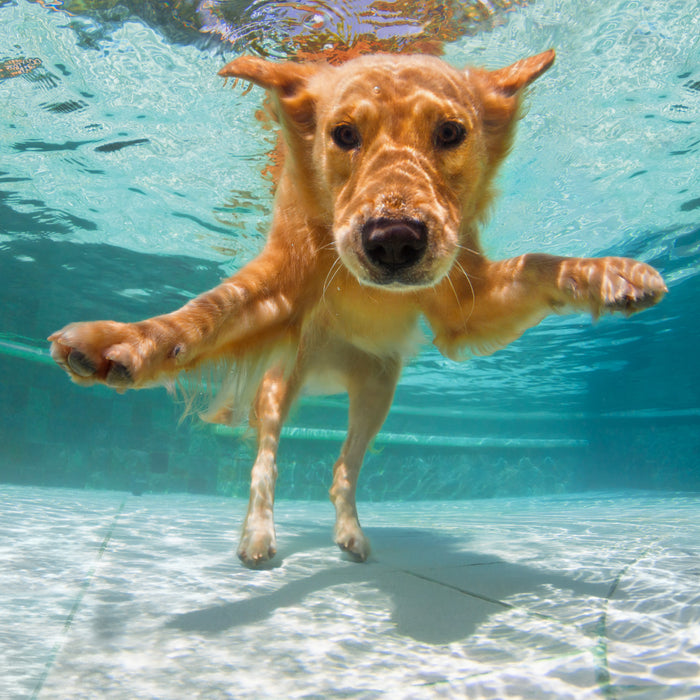I gattini imparano a leccarsi quando hanno da due a quattro settimane e i gatti adulti trascorrono fino al 50% del loro tempo di veglia a pulirsi. Allora perché dovresti fare il bagno al tuo gatto? Un bagno stimola la pelle e rimuove l'olio in eccesso, la forfora e i capelli sciolti.
Offre anche l'opportunità di insegnare al tuo gatto che essere maneggiato, anche in modi inaspettati, non gli farà del male. I gatti dovranno essere gestiti dal veterinario, gestiti da tecnici veterinari o curati da custodi e ospiti. Rendere il bagno un'esperienza piacevole aiuta i gatti a "generalizzare" l'evento a situazioni simili in futuro.
Le precedenti esperienze di bagno positive sono particolarmente utili se hai mai bisogno di fare bagni medicati al tuo gatto come parte di un piano di trattamento per condizioni della pelle come la tigna, o se il tuo gatto entra in qualcosa di particolarmente spiacevole.
Prima di fare il bagno al tuo gatto per la prima volta
Alcuni gatti schizzinosi a pelo corto raramente o mai hanno bisogno di un bagno, mentre i gatti a pelo lungo spesso hanno bisogno di un po' più di aiuto con l'igiene. Fare il bagno troppo spesso può seccare la pelle, quindi cerca di evitare qualcosa di più frequente di ogni 4-6 settimane circa.
I gattini accettano di più i bagni, quindi inizia non appena ne adotti uno, purché abbia almeno 4 settimane. I gatti anziani o estremamente malati possono stressarsi facendo il bagno, quindi segui i consigli del tuo veterinario in questi casi.
Di cosa hai bisogno per fare il bagno a un gatto?
Per la pulizia di routine, hai solo bisogno di poche forniture, tra cui:
Un semplice shampoo per la toelettatura etichettato specificamente per i gatti Diversi asciugamani Un tappetino di gomma Un asciugamano Pallina da ping pong o altra distrazione galleggiante
Lo shampoo umano (compresi quelli progettati per i bambini) o i prodotti per cani possono essere troppo aggressivi e seccare la pelle del gatto e, in alcuni casi, possono essere tossici.
Come fare il bagno al tuo gatto adulto
Prima di bagnare il tuo gatto, spazzolagli accuratamente il pelo. Quanto a te, indossa vestiti vecchi e aspettati di bagnarti.

L'area di balneazione dovrebbe essere calda e priva di correnti d'aria. Una vasca da bagno andrà bene, ma potresti sentirti più a tuo agio se puoi fare il bagno al tuo gatto in un lavandino all'altezza della vita. Spostare tutti gli oggetti fragili fuori dalla portata e spingere le tende o le tende della doccia per allontanarle. Evita qualsiasi cosa (odori forti, oggetti spaventosi, specchi) che possa spaventare i gatti, per rendere il bagno il più piacevole possibile.
Raccogli lo shampoo, diversi asciugamani e una salvietta vicino al lavandino o alla vasca da bagno e fai scorrere l'acqua calda prima di portare dentro il gatto. La temperatura del bagno del gatto dovrebbe essere intorno alla temperatura corporea, in altre parole, abbastanza calda ma non così calda da creare disagio.
Metti un asciugamano o un tappetino di gomma sul fondo della vasca o del lavandino. I gatti odiano i piedi instabili su superfici scivolose e questo renderà meno stressante. Oppure prova a mettere il gatto in una cassa di plastica per il latte in modo che possa afferrarlo con le zampe. Questo permette anche di lavare più facilmente il gatto dall'alto e dal basso.
Chiudi la porta del bagno o rischi di far scappare un gatto insaponato.
Come fare il bagno a un gattino
Per gatti piccoli o gattini, usa il doppio lavello in cucina, due o più grandi padelle per arrostire o un paio di secchi o cestini nella vasca da bagno. Riempi ognuno con acqua tiepida, quindi abbassa delicatamente il tuo gatto (una mano che sostiene il sedere, l'altra sotto il petto) nella prima ciotola per inzupparla. La maggior parte dei gatti accetta questo metodo più facilmente rispetto alla spruzzatura.
Lascia che il tuo micio si alzi sulle zampe posteriori e afferri il bordo del contenitore mentre bagni a fondo la pelliccia. Quindi prendi il gatto su uno dei tuoi asciugamani e shampoo, usando un panno umido ma non insaponato per pulire la faccia del gatto.
Dopo aver insaponato, immergi nuovamente il gatto nella prima ciotola per sciacquarlo. Rimuovere quanto più sapone possibile prima di rimuovere e scrollarsi di dosso l'acqua in eccesso prima di risciacquare accuratamente nei successivi contenitori di acqua pulita.
Prevenzione dei problemi con il tuo gatto durante il bagno
Alcuni gatti apprezzeranno molto il bagno e altri no. Sii paziente e non rimproverare il tuo gatto durante il bagno. Se il tuo gatto odia davvero fare il bagno, prova a fare un sacco di lodi, chiedendo aiuto o sciacquando via il sapone e riprovando la prossima volta. Se fare il bagno al tuo gatto a casa sembra un problema eccessivo, un toelettatore per gatti professionale è la soluzione migliore per una pulizia efficace da parte di un professionista.
Taglia gli artigli del tuo gatto con un giorno di anticipo per evitare graffi. Non farlo subito prima, altrimenti il gatto assocerà il taglio al bagno. Prova a far galleggiare una pallina da ping pong o un altro eccitante giocattolo per gatti nell'acqua per invogliare il gatto a cercare di prenderlo. Un gatto che gioca con l'acqua avrà meno probabilità di temerlo.









Leave a comment